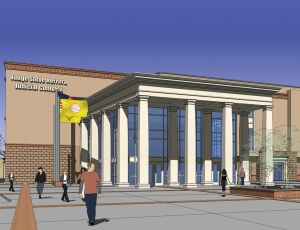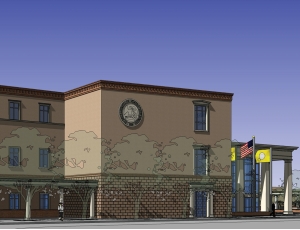Work has resumed on the Steve Herrera Judicial Complex in downtown Santa Fe, N.M., after a plume of free-phase hydrocarbons, leaked from 1920s-era leaded-gasoline tanks, led to a two-year delay. In 2009, demolition of the site�s existing structures had been completed and excavation for the 103,000-sq-ft, three-story building had begun when the owner, Santa Fe County, and the New Mexico Environment Dept. dug test wells that revealed the extent of the contamination.


To date, 27,000 tons of contaminated soil and 15,000 gallons of gasoline have been removed in the $5.1-million remediation, says Joseph Gutierrez, county community services department head.
Crews with Albuquerque-based general contractor Bradbury Stamm Construction are installing a multilayer liner and will begin laying foundations in June. A two-level subsurface parking structure near the plume now will sit atop a 48-in.-thick mat slab, instead of the original pier foundation, �to avoid the penetration of all those piers through the liner,� says Robert Martinez, vice president of construction management with the owner�s representative, Gerald Martin Ltd., Albuquerque.
Martinez doesn�t expect the delay to affect the $38.5-million construction cost; the project was bid in late 2008, when many materials prices were at their peak. Steel and HVAC units were already purchased then, he adds.
Since the plume extends beyond the site, the state is employing soil vapor extraction systems on adjoining properties that have existing structures. Air and contaminants are pulled from the soil and run through a thermal oxidizer which heats up to 1,400� F. A separate well introduces high-temperature air to the soil. �It runs clean ambient air through a heat exchanger at one of the oxidizers and injects the air at about 400� F into the subsurface to help with the volatilization,� says Gundar Peterson, senior engineer with Albuquerque-based Daniel B. Stephens Associates Inc., an environmental engineering firm contracted by the state�s Petroleum Storage Tank Bureau to clean up the plume.
The extraction wells have so far removed 16,000 gallons of hydrocarbons on top of what was removed at the courthouse site, and will continue to operate for another two to three years, says Mike McVey, senior hydro-geologist with Daniel B. Stephens Associates.


Post a comment to this article
Report Abusive Comment